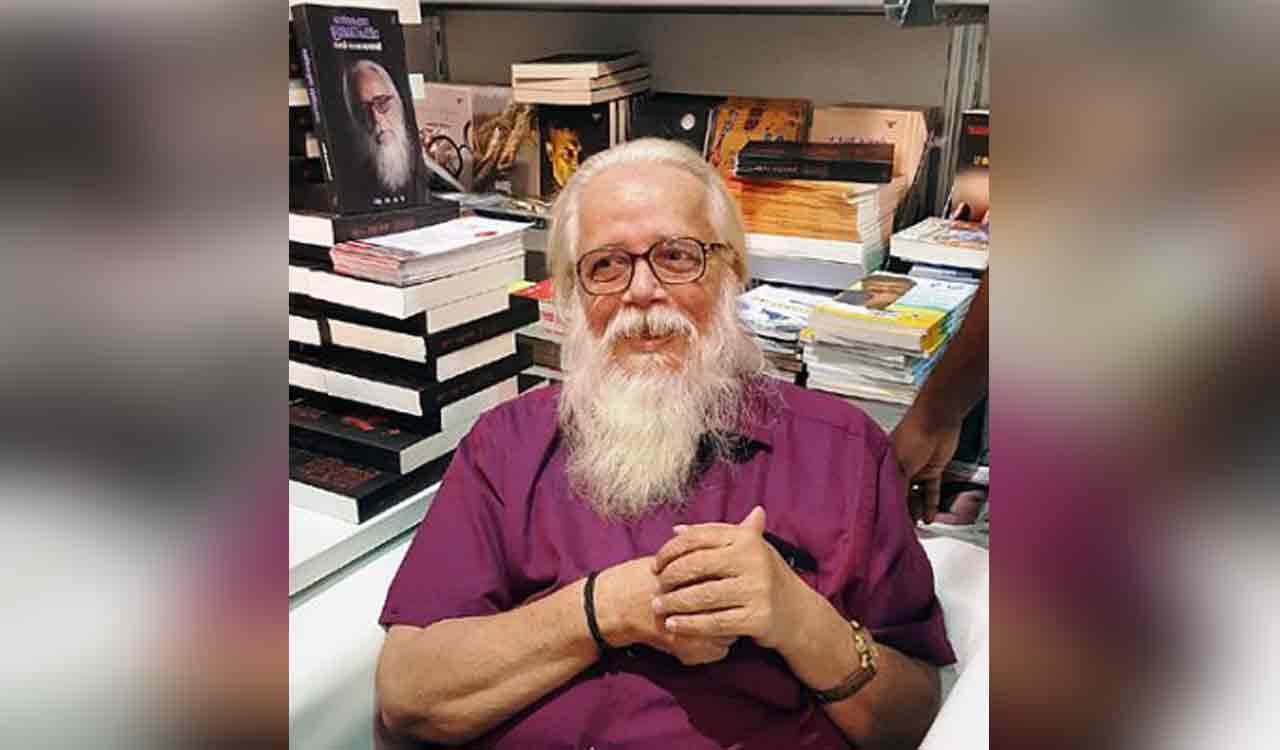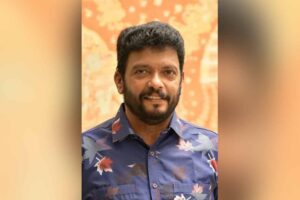The Gaganyaan project envisages a human spaceflight capability by launching a crew of three members into an orbit of 400 km for a 3-day mission and bringing them safely back to earth by landing in Indian waters.
Published Date – 07:27 PM, Sat – 21 October 23

Nambi Narayanan
Thiruvananthapuram: Former Indian Space Research Organisation (ISRO) scientist Nambi Narayanan on Saturday said that the accomplishment of ‘TV-D1’ (Test Vehicle Development Flight 1) is a great success for the first step in the Gaganyaan Mission.
“This is a great success, in the sense that this is the first step for the Gaganyaan project. This launch proves the ability of the ISRO team to check, qualify or validate their design of the escape modules,” Nambi Narayanan told ANI.
Speaking further, the scientist said, “This is an important module because, in the entire process, we are playing with life, so that these astronauts will come back alive without any issue whatsoever. They are conducting double-checks on this.” Hundreds of parameters were monitored, of course, there was an initial blip but it was due to a very small error in the monitoring system, but it has come out successfully. This is just the first step, they still have a long way to go, he added.
“We must be extremely careful in doing these things because these kind of projects have multiple applications. So we must make sure that things are done properly. I feel this is a great success,” said Narayanan further.
Prime Minister Narendra Modi also congratulated the Indian Space Research Organisation (ISRO) for completing an important test in India’s first manned spaced flight program Gaganyaan.
Earlier today, former ISRO chief G Madhavan Nair said that the successful launch of the Indian space agency’s unmanned test flight of ‘Mission Gaganyaan’ was a “significant milestone” for India’s programme to put humans in space in the near future.
“I am really happy to learn that the TV-D1 mission of ISRO has been successfully completed today…” Nair told ANI today.
Andhra Pradesh Governor S Abdul Nazeer also congratulated the Indian Space Research Organisation (ISRO) scientists for the successful accomplishment of ‘TV-D1’ in the Gaganyaan Mission.
The mission objectives of the TV-D1 launch were flight demonstration and evaluation of Test Vehicle subsystems; flight demonstration and evaluation of Crew Escape System including various separation systems; crew module characteristics; and deceleration system demonstration at higher altitudes and its recovery.
The Gaganyaan project envisages a human spaceflight capability by launching a crew of three members into an orbit of 400 km for a 3-day mission and bringing them safely back to earth by landing in Indian waters.
This programme will make India the fourth nation to launch a manned spaceflight mission after the US, Russia, and China.
Building on the success of the Indian space initiatives, including the recent Chandrayan-3 and Aditya L1 missions, Prime Minister Narendra Modi directed that India should now aim for new and ambitious goals, including setting up ‘Bharatiya Antariksha Station’ (Indian Space Station) by 2035 and sending the first Indian to the Moon by 2040





